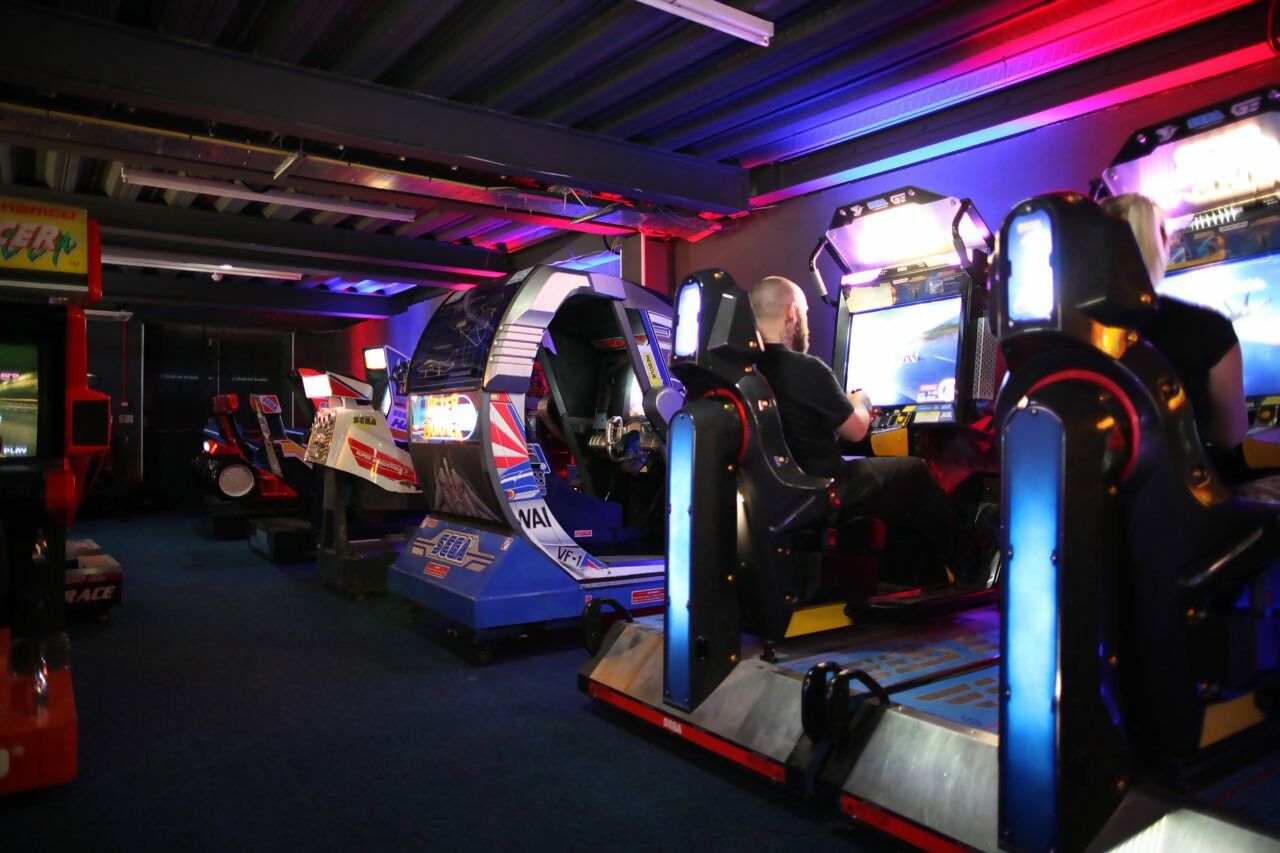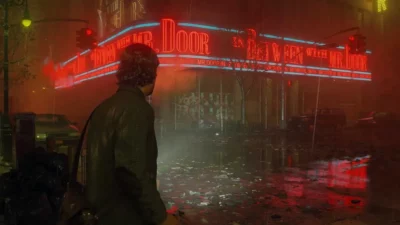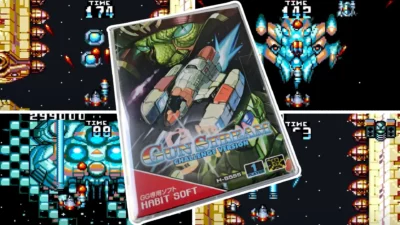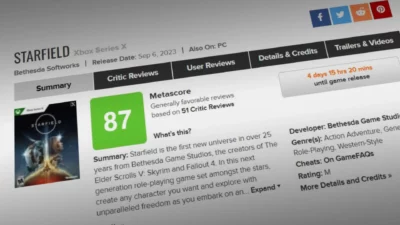
Three seasoned experts tell us about the highs and lows of running an amusement arcade in the 21st century.
For 1980s computer nerds raised on the two-colour limits of the ZX Spectrum or the Amstrad CPC 464, walking into the sensory assault of an amusement arcade was like being flung into the future.
Rows of cabinets blasted out sound and music at a deafening volume while their screens served up the vibrant colour graphics that puny home computers couldn’t hope to match. Whether it was an annual trip to a seaside town, or the occasional travelling fairground popping up for the weekend, the fleeting nature of the arcade experience only made it all the more potent.
It was the dawn of the PlayStation era, along with the launch of the Sega Saturn, that ultimately saw the Age of the Arcade fall into its twilight period. With their 3D capabilities and the CD-quality sound, the gap between home machines and arcades had narrowed to the point of insignificance. Couple that with the sudden availability of arcade emulators like MAME, and the magic that once made the arcade a unique pilgrimage for gamers began to evaporate.
For all their processing power, though, fifth-generation consoles couldn’t hope to capture the atmosphere of a real arcade. That first glimpse of a gigantic four-cabinet Daytona USA setup engulfing the floorspace; or a Sega R360 cabinet, whose ability to spin the player in every direction quickened the pulse in a way that PlayStation sitting in a bedroom simply couldn’t.
Though the arcade’s heyday has passed, there are still those out there who are passionate enough to preserve the coin-op experience for others to enjoy. Jason Rayner is one such person. As venue manager for Arcade Club Leeds and operations manager for several branches of the popular arcade hotspot, Rayner spends his days in the biggest video arcade in Europe, surrounded by hundreds of arcade machines, many of which were never designed to be operated through four decades of use. And yet, with careful attention and regular maintenance, these cabinets have been restored to live a fruitful second life.

Arcade Club in Leeds boasts over 300 machines, including VR systems and air hockey. The ground floor features several ‘modern’ arcade machines. The middle floor is an ode to the arcade’s eighties heyday.
When we first meet Rayner, he has the guts of a two-player WWF WrestleFest cabinet open, and is trying to diagnose why the machine’s screen is discoloured. It looks like hard work, but Rayner is adamant that the deluxe ‘sit-down’ cabinets (of which Arcade Club boasts many), are even trickier to look after. “Anything with moving parts is really hard to maintain,” he says. “Elevator Action [Death Parade], for example, you tend to find a lot of kids put their hands inside the closing door because there’s a sign asking them not to – so obviously, they do the opposite. We have to reset that quite often.”
It’s true that Elevator Action Death Parade, the 2009 lightgun shooter from Taito, with its giant doors that open and close to reveal the 50” screen, has an unfeasible number of moving parts. Sit-down racers can also be problematic, especially the ones that move as you steer. “Some mornings,” Rayner says, “you’ll turn everything on and within ten minutes everything will be running fine, then other mornings you’ll switch stuff on and OutRun 2 has crashed, the joystick isn’t working on this, an I/O board isn’t working on that. Sometimes a flick of electricity is enough to stop everything from working.”
John Warner, general manager of NQ64, an arcade bar in Digbeth, Birmingham, agrees when it comes to the reliability of the beloved Sega racer: “OutRun 2 is notorious for breaking down,” he says. “It’s a sit-down four-player cabinet that needs servicing, I’d say, about every six weeks. It does take a toll, when a screen goes down. But there’s always Mario Kart!”
As a dedicated nightlife venue open until the early hours, the players bashing away on NQ64’s cabinets are often somewhat worse for wear. But generally, Warner says, the machines are pretty bulletproof. “To be honest, we don’t need to remain that vigilant. On a Saturday night, for example, we might need to go over to the OutRun sit-down racer around ten times, which sounds dramatic, but it’s actually pretty low. There are little tables next to the cabinets for drinks which helps. In terms of drinks getting spilled on the machines, our tech guys have done everything they can to make sure people are as safe as possible when interacting with the machines.”
Read more: Celebrating the bygone joy of bespoke arcade cabinets
Keeping the lights on
When dealing with such old machines, maintenance inevitably forms a huge part of running a 21st-century video arcade. “It’s very rare that everything in the arcade works one hundred percent,” says Rayner. “There’s always something that doesn’t work, where you’re waiting on parts.” While regular cleaning does form part of the upkeep, most arcades tend to service machines as needed, adopting an ‘If it ain’t broke, don’t fix it’ approach.
“On a day-to-day basis, there generally isn’t too much ad-hoc maintenance, as we have spare machines to swap in if machines go down,” explains Gavin Kapuscinski, general manager of the recently opened The Pixel Bunker in Milton Keynes. “We have a technical team, who are based further in the north, who come down every week or two, to fix or maintain machines. We also do a full refurbishment on every machine we purchase.”

The vector graphics in Atari’s Star Wars were simple yet beautiful.
Likewise, the crew at NQ64 find it more efficient to simply service the machines when they need it. As Warner puts it: “The machines get cleaned twice a day. In terms of tech support, rather than trying to diagnose problems that haven’t happened yet, we tend to wait until they break so you can pinpoint the issue quickly.”
One aspect that each venue needs to consider carefully is floor space. Not only are arcade machines bulky, but they’re also essential pieces of video game history. Walking through a modern arcade should feel curated, like a visit to an art gallery or a museum, because, in effect, a video arcade is both. But who decides how we experience an arcade, and with limited space, which machines even make it in?
“On the classic floor, we try and group all of the games together by type,” explains Rayner, “so you have Time Crisis and the other shooters, then you’ve got all of your Pac-Man games together, and so on. We try and make sure we’ve got all of the classics that everybody remembers: Space Invaders, OutRun, Star Wars, Paperboy.”
Likewise, The Pixel Bunker values the arcade as a way of celebrating the medium’s rich heritage, and as such, is always looking for landmark machines. “We’d love a Computer Space cabinet, which was the first arcade game ever made – that’s top of the list,” states Kapuscinski.
“But there’s not many of them about, as you can imagine. We’d love the original Pong machine, too. We try to stick closely to the experience of what arcades were, so having machines from the early days is a dream because we do see ourselves as preserving video games’ past for the future to enjoy. We’re not about to start roping off machines so you can’t play them, but we are a slice of history.”
Over at NQ64, the token-based system used by the bar allows management to evaluate which machines are justifying precious floor space. “We use the tokens that the players pop into the games to monitor how much each game is being played,” explains Warner. “If something is only getting played, say, ten times a week, we put it under review. Every two months or so, we’ll use that to change the machines for something else. For example, we swapped CarnEvil for 1944: The Loop Master, which we’re seeing a lot more potential with.”
It’s a process of experimentation honed thoughtfully by each arcade. “We aim to swap out at least ten or so of our hundred machines at The Pixel Bunker, every month or so, just to keep that freshness,” says Kapuscinski. “After all, that’s how it would have been in the 1980s, with new machines constantly being released.”

True to Digbeth’s street art style, NQ64 has some crazy psychedelic wall art that you can study whilst you contemplate game strategy.
Wandering nostalgically among the sights and sounds of your youth is a powerful experience, and the trio of arcade managers we spoke to mention the satisfaction of giving visitors a small but resonant glimpse of their childhood. “So many people come up to you; they’re so emotional, seeing games they haven’t seen for 20 or 30 years. Something like the Star Wars cockpit cabinet will [often] have that effect,” explains Rayner.
“There’s such a nice vibe; everybody wants to talk to you about games.” Kapuscinski agrees, adding that tracking down machines that visitors are desperate to play is one of the most satisfying aspects of the job. “We’ve already got a lot of repeat visitors,” he says. “To see them come back and we’ve got the machine they wanted, the one that was dear to their childhood, to be able to give them that nostalgic experience, is fulfilling for the staff.”
Both Rayner and Kapuscinski mention the magnetic appeal of Atari’s 1983 sit-down Star Wars cabinet, and the way grown adults are reduced to giddy children as they relive a less complicated time in their life. As Rayner puts it: “The best thing is seeing the joy on people’s faces, especially those that haven’t seen an arcade in decades. They just walk around with their mouths hanging open. The beauty of Arcade Club is that it takes you back to a time when you had no problems, you’d just go to an arcade when you were a kid, with your mum and your dad, and just enjoy playing games.”
What about the kids of today, though? What does the Fortnite generation make of these simplistic, pixelated games? After all, with no online capabilities or loot box upgrades, they’re rooted firmly in gaming’s past. “We have a lot of kids turn up and at first, you can tell, they’re not really looking forward to it,” says Kapuscinski.
“Once they get in here, they begin to see it as a learning experience, to understand where games like Fortnite originate from. After all, the original first-person shooters, for example, were arcade cabinets, and the graphics from Minecraft were inspired by these retro games. When they begin to understand this, they really start having fun. They often gravitate towards lightgun games like House of the Dead, Time Crisis, and Operation Wolf. With the popularisation of Call of Duty, it’s something they can relate to.”
It’s not like arcade machines are a previously undiscovered species for young players. The availability of classic titles on console platforms, even phones in some cases, means they have some familiarity with retro titles, even if they’re divorced from the environment they were designed to be played in. With films and TV shows such as Wreck-It Ralph and Stranger Things offering up affectionate homages to 1980s video arcades, however, even gamers raised on a PlayStation 4 understand the cultural significance of the arcade.
“When families do come in,” says Rayner, “they tend to stick to the bottom floor where we have more modern machines, rather than the classic floor. But as daft as it sounds, things like the Wreck-It Ralph film show kids these games have timeless appeal. They’ll come in and say ‘Whoa, they’ve got Tapper and Q*bert and get excited because they’ve seen them in the film.”

OutRun is a racing classic, but the deluxe cabinet with moving parts needs regular maintenance.
From regular visitors that gladly donate spare parts to ensure they go to a good home, through to hardcore gamers that turn up to play marathon Dance Dance Revolution sessions with sweat towels in hand, the sense of adoration and commitment to communally preserving and embracing the joys of the arcade experience feels real. This of course extends to the efforts of the staff as well, who pour countless hours into ensuring that gaming’s past remains available for all to enjoy. “Some of these cabinets that we get, the boards don’t work, the monitors are damaged, there’s mould on the cabinets, the wood is damp or damaged,” explains Rayner.
“A lot of love goes into getting them working, a lot of love goes into it, that’s why we close for three days a week, to maintain the machines.”
Read more: Atari’s Star Wars 1983 coin-op | remembering a masterpiece of arcade tech
Preserving the past
Private collectors aside, 21st-century arcades such as Arcade Club, The Pixel Bunker, and NQ64 are now the preservers of video gaming’s early years. It’s a responsibility they’re taking seriously. “Eventually, we’ll reach a place across the world where we’re running out of parts, but we’re nowhere near that yet,” reflects Kapuscinski. “We can still save every machine right now. It’s a horrible thought though, that one day we may have to consider preserving these machines by choosing not to play them.”
One machine that was saved, for at least a while longer, was the WWF WrestleFest cabinet that Rayner was repairing when we originally met him. When reminded of that first encounter, he laughs: “It’s fixed now – all fully working. WrestleFest is one of those games that takes you back to a time when you were at school. You see the Legion of Doom talking on the intro screen and you’re like, ‘It’s a game that has speech’. Kids don’t realise that back then, when a game came with speech, it was a big deal.”
He’s not wrong. It was a time in gaming’s infancy, when speech in games was a big deal, when more than a couple of colours in games were a big deal. As players, the DNA of every game that we love today, every title we spent countless hours on, is buried deep within those cabinets with their bright livery and primitive systems.
Thankfully, it seems, they’re in good hands.
One of the high scores at The Pixel Bunker remains unbeaten for four years. The game? Namco’s Pole Position.





